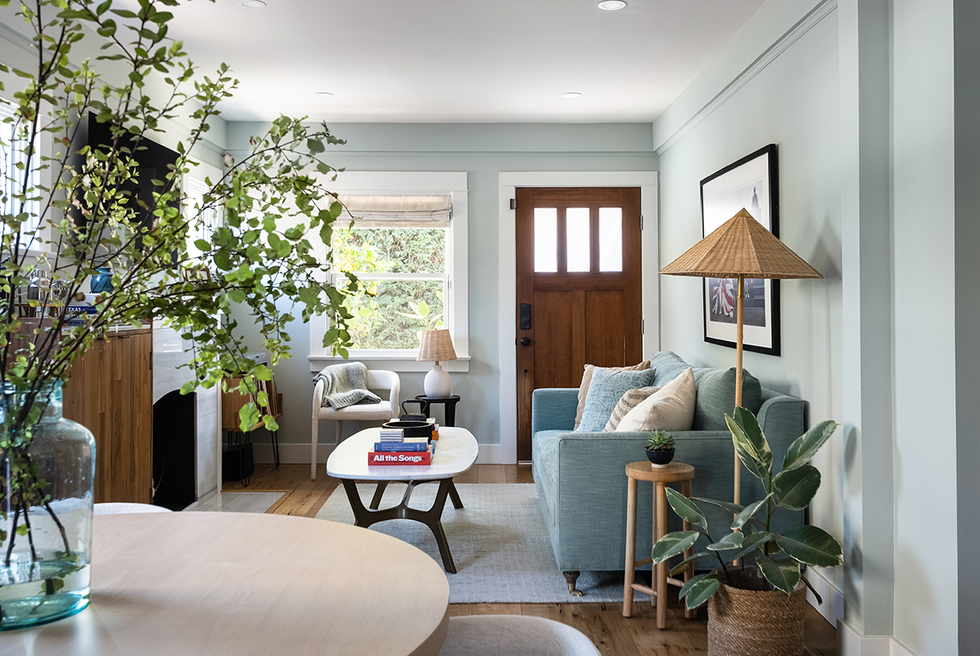Creating a Cohesive Photo Wall Aesthetic: A Guide for Pros
For many professional photographers, creating a cohesive photo wall aesthetic is not just about displaying beautiful photos; it's about telling a story through a visually appealing arrangement. This process can transform any space into a personal gallery that reflects a photographer's unique style and vision. But how can one achieve such an aesthetically pleasing and coherent display? This article delves into the art of creating a photo wall that captivates and engages viewers.

Understanding the Basics of Photo Wall Design
Creating a photo wall is an art form in itself. It requires a keen eye for detail, an understanding of color and composition, and a strategic approach to placement. As a professional photographer, you have the advantage of knowing what makes a photograph stand out. However, arranging those photos on a wall requires a different set of skills.
The first step in creating a cohesive photo wall aesthetic is selecting the right photos. Consider the theme or story you want to convey. Do you want to showcase a specific event, like a wedding or a travel adventure? Or perhaps you wish to highlight a collection of portraits or landscapes? Once you have a theme in mind, select photos that complement each other in terms of color scheme, mood, and style.
Selecting the Perfect Frames
Frames play a crucial role in the overall aesthetic of a photo wall. They can either enhance or detract from the photographs. When choosing frames, consider the style of the room where the photo wall will be displayed. For a modern and minimalist look, opt for simple frames with clean lines. For a more traditional or eclectic style, ornate or colorful frames can add visual interest.
It's also important to consider the size and shape of the frames. Mixing different sizes and shapes can create a dynamic and interesting display. However, for a more uniform look, stick to frames that are the same size and shape. To gain more insights into choosing the right frames, check out this article on Choosing Frames for Photo Wall Displays.
Planning the Layout
The layout of your photo wall is crucial to its overall impact. There are several approaches you can take, depending on your personal style and the space available. Some popular layout options include grid, salon-style, and linear arrangements.
The Grid Layout
The grid layout is a classic choice for those who prefer symmetry and order. This layout involves arranging photos in a neat, grid-like pattern. It works well in modern spaces and is perfect for photographers who want to showcase a series of related images.
The Salon-Style Layout
The salon-style layout, also known as the gallery wall, is ideal for those who love an eclectic mix of photos and frames. This arrangement involves placing photos at varying heights and distances, creating a more casual and relaxed feel. It's a great choice for showcasing a diverse collection of work.
For more creative layout ideas, explore this guide on unique wall decor ideas.
The Linear Layout
The linear layout is simple yet effective. It involves arranging photos in a straight line, either horizontally or vertically. This layout works well in narrow spaces or hallways, where it can draw the viewer's eye along the length of the wall.
Incorporating Artistic Elements
While photos are the main focus of a photo wall, incorporating other artistic elements can enhance the overall aesthetic. Consider adding pieces such as paintings, prints, or mirrors to break up the monotony and add depth to the display.
You might also want to experiment with different materials and textures. For example, using wooden or metal frames can add a rustic or industrial feel, while fabric-covered frames can introduce a softer touch. For inspiration on how to incorporate various elements into your photo wall, read this article on bedroom wall decor ideas.
Lighting: The Unsung Hero
Lighting is often overlooked but plays a critical role in the presentation of a photo wall. Proper lighting can enhance the colors and details of your photographs, making them more vivid and eye-catching. Consider using track lighting or picture lights to highlight your photo wall. Natural light can also be a great asset, but be mindful of direct sunlight, which can cause photos to fade over time.
Final Thoughts
Creating a cohesive photo wall aesthetic requires careful planning and creativity. By selecting the right photos, frames, and layout, and incorporating artistic elements and proper lighting, you can create a stunning display that showcases your work and personality. Remember, the key is to ensure that each element works in harmony to tell a cohesive story.
For more tips and ideas, check out this article on minimalist photo walls.

FAQs
How do I choose the right photos for my wall?
Select photos that complement each other in terms of color, mood, and style. Consider the theme or story you want to convey and choose images that align with that vision.
What is the best way to arrange photos on a wall?
There are several layout options to choose from, including grid, salon-style, and linear arrangements. Consider the space available and your personal style when planning the layout.
How can I make my photo wall more dynamic?
Incorporate different sizes and shapes of frames, add artistic elements such as paintings or mirrors, and use proper lighting to enhance the overall aesthetic.

